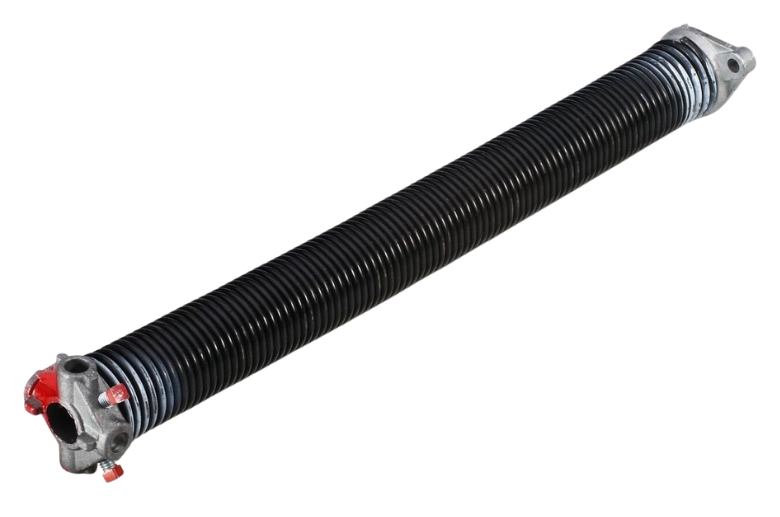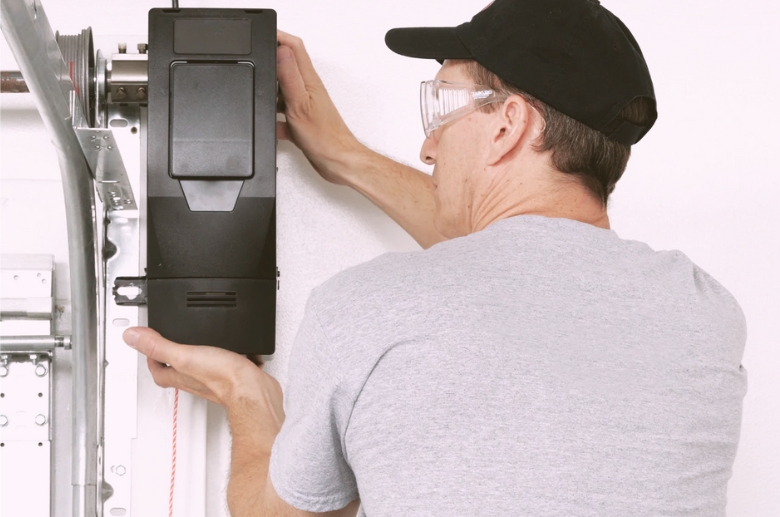Connect With A Garage Expert
Connect with local experts, Compare quotes, Get the best price.
A jackshaft garage door opener is a type of door opener that is mounted on the wall beside the garage door, as opposed to the typical overhead position of traditional openers.
It uses a motor to turn the torsion bar and operates the door without the need for a long rail mechanism, which is ideal for garages with high ceilings or limited overhead space.
In this article, we will explain in detail what is a jackshaft opener. We will also cover its benefits, installation requirements, and technical aspects of this type of opener, as well as how to choose between jackshaft and traditional openers.
What Is a Jackshaft Garage Door Opener?
A jackshaft garage door opener mounts to the side of your garage door and operates by turning a torsion spring torsion system.

Unlike traditional openers that are mounted on the ceiling and use a chain or belt drive to lift the door, a jackshaft opener does not require any overhead space or rails.
Instead, it uses a motor and a gear system to rotate the torsion spring bar, which in turn raises or lowers the door.
The main components of a jackshaft garage door opener are:
- The motorized unit responsible for turning the spring
- Gear mechanism facilitating the transfer of motion from the motor to the spring
- Wall-mounted control panel enabling remote or manual operation of the opener
- Safety sensor designed to detect obstructions and halt the opener’s movement
- Battery backup ensures continued operation during power outages
When you press the button on the control panel or the remote, the motor starts to spin and engages the gear system. The gear system then turns the torsion spring bar, creating tension or release on the cable.
As a result, the cable drum winds or unwinds the cable, lifting or lowering the door. Additionally, the safety sensor monitors the movement of the door and stops the opener if it detects anything blocking the door. Moreover, the battery backup kicks in if the power goes out, allowing you to open or close the door
Jackshaft garage door openers differ from traditional models in several ways, such as:
- Positioned on the side of the door, not the ceiling
- Utilizing the torsion spring system rather than a chain or belt drive
- Featuring a sleek, compact design compared to conventional openers
- Delivering quieter and smoother operation than traditional models
- Providing additional features and options like battery backup, smart connectivity, and emergency release
Benefits of Jackshaft Openers
Jackshaft garage door openers offer many benefits over traditional openers, such as:
Space Saving Design
Jackshaft openers are space-saving solutions mounted on the side of the door. They optimize overhead space, ideal for garages with low headroom. By attaching directly to the door’s side, they free up valuable space. This design is a key advantage of jackshaft openers.
Quiet Operation
Wall-mount garage door openers are known for their quiet operation. Due to reduced vibration and sound transmission, they produce minimal noise. Unlike traditional openers with chain or belt drives, they operate smoothly and silently. This quiet performance is ideal for areas adjacent to or above the garage.
Aesthetic Appeal

Jackshaft openers also enhance the aesthetic appeal of your garage door. Since they are mounted on the side of the door, they do not affect its appearance or design. You can choose a jackshaft opener that matches the color and style of your door or choose a more discreet and minimalist look.
Smooth Door Movement
Jackshaft openers also provide smoother and more consistent door movement than traditional openers. This is because they use the torsion spring system, which acts as a counterbalance for the door’s weight. The spring ensures that the door is balanced and aligned at all times and prevents it from sagging or bouncing.
Enhanced Security
The automatic door lock in jackshaft openers adds extra security by stopping anyone from opening the garage door from outside or inside without permission. When the door is closed, this lock kicks in automatically, keeping the door firmly shut until you decide to open it. It’s like having an extra barrier to keep intruders out and prevent anyone from sneaking in through the garage.
Jackshaft Opener Installation Requirements and Technical Aspects
Before you decide to install a jackshaft garage door opener, you need to consider some installation requirements and technical aspects, such as:
Torsion Spring Compatibility

Your garage door needs a torsion spring system for a jackshaft opener to work. This spring winds and unwind to move the door. If your door has a different spring type, like an extension spring or Wayne Dalton TorqueMaster spring, a jackshaft opener won’t be compatible. You’ll have to convert to a torsion spring system before installing the opener.
Another factor to consider is the amount of lateral space and clearance your garage door has. A jackshaft opener requires at least eight inches of lateral space on one side of the door and a minimum of three inches above the door. This ensures that the opener can fit and function properly and that there is enough room for the cable drum and the safety sensor.
A jackshaft opener requires a nearby electrical outlet for power. This ensures the motor and gear system get enough electricity to work. If your garage lacks an outlet nearby, you may need to install one or use an extension cord. But be cautious of using cords that are too long or thin, as they can cause safety issues.
Professional Installation

Finally, you should consider hiring a professional to install your jackshaft garage door opener. Although some jackshaft openers come with installation manuals and videos, the installation process can be complex and challenging, especially if you are not familiar with garage door mechanics and electrical wiring.
Connect With A Garage Expert
Connect with local experts, Compare quotes, Get the best price.
Choosing Between Jackshaft and Traditional Openers
When considering the choice between jackshaft vs traditional garage door opener, several design attributes stand out.
Here are some decision factors to consider:
| Feature | Jackshaft Opener | Traditional Opener |
| Mounting Position | Side-mounted on the wall | Ceiling-mounted with a rail system |
| Noise Level | Lower due to less vibration | Often louder with more moving parts |
| Space Requirements | Requires minimal headroom | Requires more headroom for the rail |
| Maintenance | Typically lower due to fewer moving parts | May be higher with belts/chains to maintain |
| Cost | $ 499 – $800 | $ 200 – $600 |
In summary, the jackshaft opener’s innovative design simplifies the complexities of garage door mechanisms and addresses the space and noise constraints often experienced with traditional openers. Its straightforward operation and exceptional features present a compelling case for those in pursuit of a modern, efficient garage door system.
Conclusion
In the world of garage door openers, the jackshaft garage door opener stands out for its innovative design and functionality. Mounted on the wall beside the garage door, it operates the door by turning the torsion bar, which then moves the door up and down.
This mechanism frees up ceiling space, making it a perfect option for garages with high ceilings, limited headroom, or those needing to maximize available space for storage or other purposes.
If you’re considering upgrading your garage with a jackshaft garage door opener or have any questions about whether this option is right for you, don’t hesitate to contact us today. We can help you explore your options, get professional advice, and ensure that your garage door setup meets all your needs and preferences.




